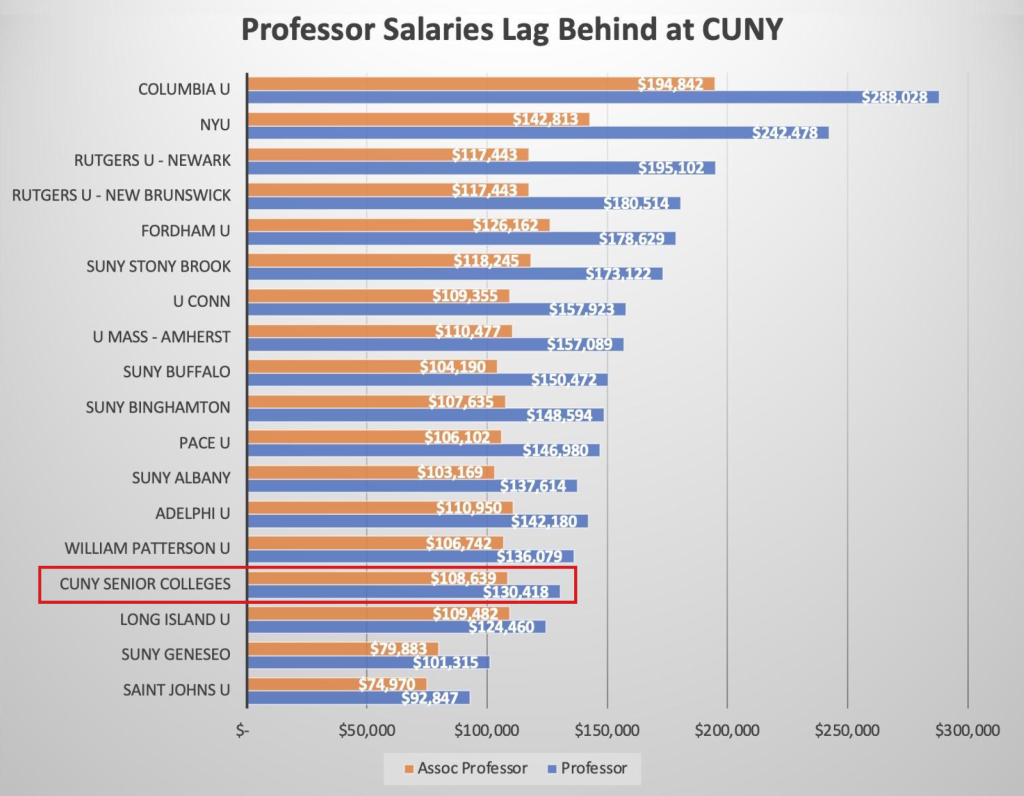State Disinvestment
- State funding per student at the senior colleges declined 38% between 1990 and 2022, when adjusted for inflation. It fell 18% between the Great Recession of 2008 and 2022, due largely to Governor Cuomo’s refusal to fund CUNY’s mandatory operating costs.

Tuition Hikes
- Austerity for CUNY predates the Great Recession; it started with NYC’s Fiscal Crisis of 1975. In the wake of “open admissions,” as campuses were diversifying, CUNY began to charge tuition.
- For more than 100 years, the majority white student population at CUNY could attend tuition-free.
- Senior college tuition has increased significantly in recent decades, when adjusted for inflation. Community college tuition has increased over the same periods.
Faculty Shortages and Adjunct Exploitation
- Before the 1975 Financial Crisis, CUNY employed 11,500 full-time faculty members.
- Now there are only 7,200 full-time faculty and most undergraduate teaching is done by 11,000 under-paid adjuncts.
- Most CUNY adjuncts work without job security and are paid significantly less to teach the same level of courses as their full-time colleagues.
Understaffed & overwhelmed Student Services
- For most CUNY students, the University is their only access to mental health counseling
- CUNY lags behind the national average ratio of academic advisors to students.
- PSC members providing advisement and counseling report overwhelming caseloads
Crumbling Infrastructure
- More than half of CUNY’s 300 buildings are over 50 years old

- Only 8% of CUNY buildings are in a state of good repair
- The Deferred Maintenance Backlog on CUNY buildings is over $5 billion
Un-Competitive Wages
- Professors at CUNY earn less than their counterparts employed at peer institutions like Pace University, Fordham, University of Connecticut, Rutgers University, and Stony Brook University.
- CUNY adjuncts earn less per course than adjuncts teaching at comparable colleges and universities in and around New York.

